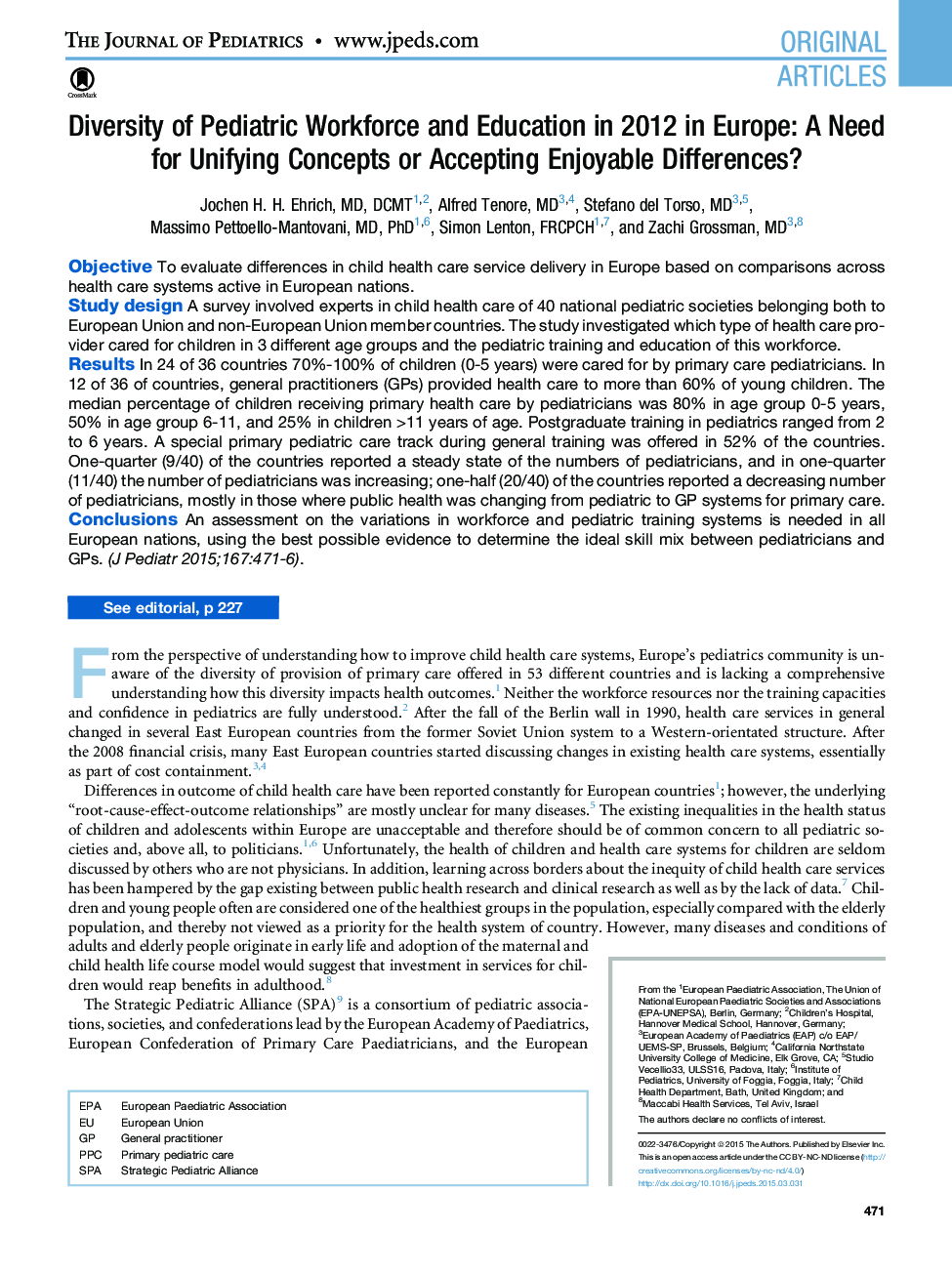| Article ID | Journal | Published Year | Pages | File Type |
|---|---|---|---|---|
| 6220539 | The Journal of Pediatrics | 2015 | 10 Pages |
ObjectiveTo evaluate differences in child health care service delivery in Europe based on comparisons across health care systems active in European nations.Study designA survey involved experts in child health care of 40 national pediatric societies belonging both to European Union and non-European Union member countries. The study investigated which type of health care provider cared for children in 3 different age groups and the pediatric training and education of this workforce.ResultsIn 24 of 36 countries 70%-100% of children (0-5Â years) were cared for by primary care pediatricians. In 12Â of 36 of countries, general practitioners (GPs) provided health care to more than 60% of young children. The median percentage of children receiving primary health care by pediatricians was 80% in age group 0-5Â years, 50% in age group 6-11, and 25% in children >11Â years of age. Postgraduate training in pediatrics ranged from 2 to 6Â years. A special primary pediatric care track during general training was offered in 52% of the countries. One-quarter (9/40) of the countries reported a steady state of the numbers of pediatricians, and in one-quarter (11/40) the number of pediatricians was increasing; one-half (20/40) of the countries reported a decreasing number of pediatricians, mostly in those where public health was changing from pediatric to GP systems for primary care.ConclusionsAn assessment on the variations in workforce and pediatric training systems is needed in all European nations, using the best possible evidence to determine the ideal skill mix between pediatricians and GPs.
